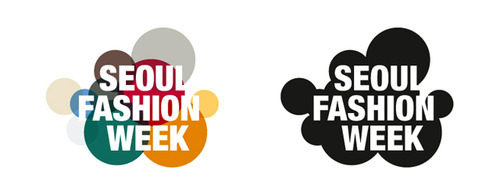
When we first visited Korean Fashion Week in Seoul in 2009, the experience was similar to Taipei Fashion week of 2014, with the only exception that Seoul is a major hub city in the world, and Taipei is more provincial and quaint.
We were met by the interpreter in Hotel Rivera, which is pronounced by Koreans as Ribera, to do with [b] and [v] sounds mixed in Korean language.

It was an OK hotel, but predominantly Korean speaking, which did make our life a bit difficult. We did not know that the interpreter was like a spy for the fashion week). They had to report how many shows we missed and why. At the time it was important to see the shows, more important than to do a buy. On the following morning, the bus picked us up and we went to the location.

In 2009 Seoul (Soul Fashion Week) was held in the Seoul Trade Exhibition & Convention at Hangnyeoul station, the event comprised the Seoul Collection (a catwalk show featuring leading designers in Korea), Generation Next (featuring selected promising local designers), and Seoul Fashion Fair (with a focus on the presentation of only13 designers). There were lots of delegates who were invited season after season and who did not buy anything. It was a free trip, free accommodation (I should not have whinged). We were real buyers, we tried to buy and we could not. In the front rows apart from the buyers and the press (VIP seats) were the faces of pensioners (free tickets) and officials who were nodding off during the shows. I must explain that in Korea the first seats are given to the pensioners and disabled, the second turn goes to the children, the third turn to the tourists and only then to the ordinary Koreans. As much as this feels fair, as a general rule, officials were a bit out of place at Seoul Fashion Week. Unfortunately, the government suits who were sitting in big boardrooms then and commanded large amounts of money for Seoul Fashion week, generally liked to engage in promotion for promotion’s sake. Unfortunately, the government officials, preferred girly, pretty, feminine fashion, of 50 years ago), and there was nothing for us to buy for our style women’s fashion. The problem was even deeper than the style of fashion itself.

The problem was with the sizing and the prices too. Korean designers were eager to sell abroad, but for exuberant prices. You could feel it was their only chance to get ahead. The only brands suitable for western women were at the time Kuho (Chiel industries-Samsung), Time and Mine, System (LG), which did not participate in Seoul Fashion week, but were widely available at the luxurious department stores.
We found few brands among men’s fashion, namely Songzio and General Idea.

In general, Seoul Fashion week was exclusively for Korean speaking people at the time. There were Korean celebrities, Korean press, none of the English speaking media including the bloggers were invited.
A little bit of history:
Korean fashion industry has been on the international scene for a long time, but as an export industry since after the Korean War. Many from the fashion industry already know that South Korea has been a major exporter of high quality textiles for decades already. It is still very slow in producing top end designers well known on the world runways.

You must remember, that until the early 1990s, South Korea had essentially lived under military dictators, the 1st of them, Park Chung Hee, had banned fashion shows outright after his takeover in 1961 as part of austerity measures designed to weed out as negative elements of bourgeois society. South Koreans are still wrestling with the challenge of untangling the civil society from government control.
Since our first fashion week in Seoul to the last one in Spring 2014, a lot of things have changed. The buyers and press, are now staying at W hotel, the shows are at DDP (Dongdaemun Design Plaza), one of the most futuristic locations in the world. The male and female designers are plenty, the government officials decided to share the fashion week with the KFDA (Korean Fashion Designers Association).

But…for the likes of Anna Vintour or Emanuelle Alt to come to Seoul Fashion Week…It needs to be enough knowledge spread there by medium-level fashion media outlets doing stories on Korean designers and the street. And to get to that level, Seoul fashion Week needs to have enough English speaking bloggers and journalists doing stories on Korean fashion and “Soul” fashion week to generate the basic information in the “ether”. The biggest problem for the Korean fashion industry is the same problem as for the country as a whole. South Korea is a pretty insular culture, both online and offline. There is a lot of information about Korean fashion designers on the Internet, most of it in Korean. Korean cultural assumption is such that non-Koreans do not care about Korea anyway. Even the international events information is mostly in Korean. Combined with the fact, that Korean language is one of the most difficult languages in the world, Korea is still the country with the big Non-English speaking padlock on the outside, and with the most hospitable people on the inside.
“Soul” Fashion week, in my opinion, deserves to be one of the 5 major weeks in the world. It only needs to be “seasoned” with the English interpretation.

